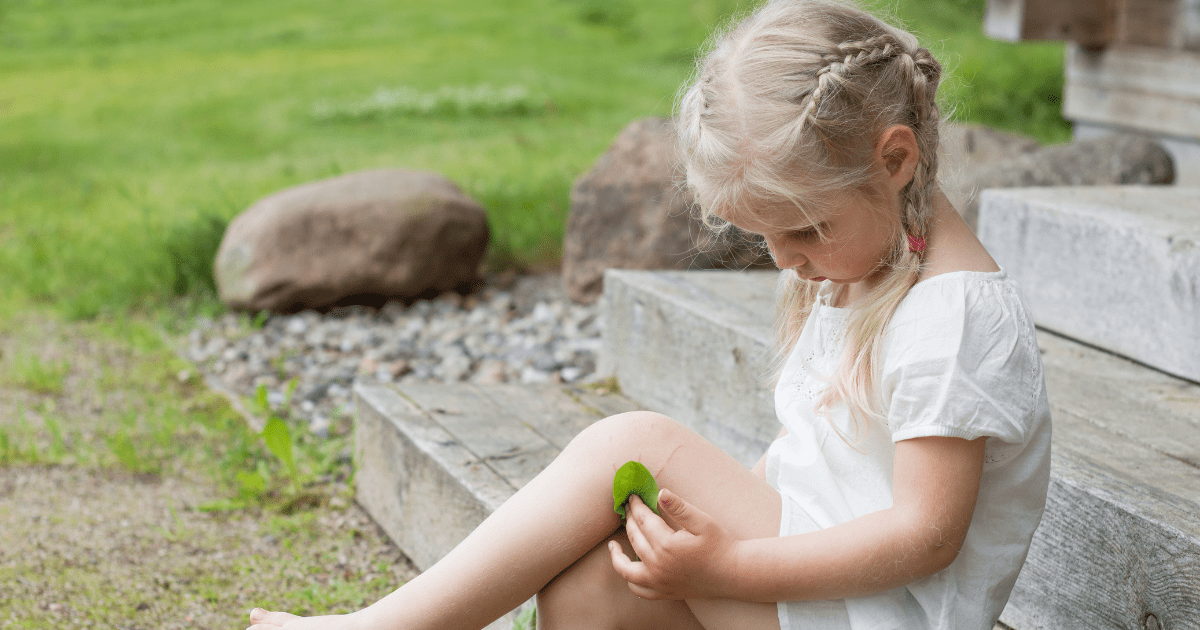Tips to Help Children with Anxiety Caused by Trauma
Written By Cristine Membury

In an ideal world, all children would be protected from harm and have opportunities to grow and flourish to their full potential in loving and nurturing homes and environments free of violence, discrimination, and poverty. Sadly, this is not the case; we cannot protect our children from all accidents or adversity. According to the Canadian Consortium on Child & Youth Trauma (2023), 1 in 3 Canadians have experienced at least one adverse childhood experience (ACE). Trauma and its impacts are prevalent in children, and in society more broadly. As such, it is essential to recognize the signs and symptoms of anxiety related to trauma and to learn to support children with these challenges.
The National Child Traumatic Network defines trauma as a lasting emotional response from a “frightening, dangerous, or violent event that poses a threat to a child’s life or bodily integrity” (NCTSN, 2023). It can also be traumatic for children to witness an event that threatens the life or security of a loved one. Trauma stems from acute events such as accidents, natural disasters and assaults, or may be chronic and complex from things like abuse, neglect, domestic violence, poverty, discrimination, or prolonged hospitalization. A child can struggle with the effects of trauma even if the events took place long before they are able to explicitly remember what happened, including in infancy. Our brains are wired for survival, and as a result, traumatic memories are implicit memories (Grégoire et al, 2020), meaning they may still impact us even if not remembered.
Trauma can harm a child’s sense of safety. Signs and symptoms may differ in each child and change over time. The following are signs in children and youth who have experienced trauma, to be aware of (Child Mind Institute, 2023):
- Sleep disturbances, including nightmares and difficulties falling or staying asleep.
- Changes in appetite.
- Intrusive thoughts or flashbacks. Younger children may re-enact traumatic memories through play.
- Excessive clinginess and difficulties separating from caregivers and loved ones.
- Regressive behaviours such as thumb sucking, baby-talk, whining and bed-wetting.
- Increased fearfulness. For example, fear of the dark, accidents, people, and being alone.
- Heightened sensitivity and reactivity to the sensual stimulation, including particular sounds (alarms, sirens, raised voices) as well as sights, smells, touch / textures and tastes.
- Hyper-vigilance or jumpiness. Children or youth may present as seemingly on alert.
- Strong emotional dysregulation which can present as crying, tantrums, and emotional outbursts in younger children. It may present as mood swings, anger, irritability, and panic attacks in older children and youth.
- Somatic complaints such as headaches and stomach aches.
- Avoidance of certain people, places, situations, and things.
- Difficulties with focus, concentration, and learning.
- Difficulties with interpersonal relationships, such as conflict, lying, making/keeping friends.
- Rumination about the event(s), otherwise described as frequently thinking or talking about what happened.
- Withdrawal from activities of interest and isolating self from others.
- Suicidality and self-harming behaviours.
- Engaging in risky or illegal activities including drinking alcohol and substance use.
It is necessary to understand these behaviours and symptoms from a trauma-informed? lens, to know that they are rooted in survival. These behaviours are the child’s unspoken language and a way of communicating that they are not well and may need help.
While trauma has the potential to have long-term effects, it is important to note that experiencing a traumatic event does not always lead to lasting symptoms and challenges. It is normal to experience symptoms of anxiety and distress in the first month following a traumatic event. The support and response provided in the moments, days, weeks, and months following a traumatic event could significantly reduce the long-term impacts of trauma. Symptoms of anxiety may present differently in diverse environments, and simply removing a child from a harmful or abusive situation does not necessarily remediate symptoms and challenges. The Child Mind Institute (2023) offers helpful tips to support a child after a traumatic event, after a disclosure of past trauma and when presenting with anxiety symptoms related to trauma. These include:
- Maintain your calm to co-regulate. Children can sense your distress and calm, and will respond to each of these accordingly. The more regulated and calm you are, the more you will be able to effectively support them in regulating their own emotions.
- Help the child feel safe by offering physical contact such as a gentle touch, hugs, and snuggles. Providing verbal reassurance that they are not alone and that they are safe.
- Spend time with the child and keep them busy with activities that they enjoy.
- Maintain routines and normalcy in the days and weeks that follow. Consistency equates to predictability and safety.
- Listen to your child. Allow children to talk about what happened, including their thoughts and feelings, at their own rhythm and respect if they are not ready to talk or share more.
- Be mindful of what you say around them about the traumatic event and of what they are exposed to on TV or social media.
- Connect before redirecting. When faced with challenging behaviours, try to understand how your child may be feeling, as this is what is causing the behaviour
- Support the emotional need by acknowledging, labeling, validating, and normalizing difficult emotions without dismissing them.
- Teach and practice healthy coping skills with them before and during difficult moments to help manage emotional distress.
- Talk about the positives and what is going well for them in their lives, including their abilities to learn and grow from this.
- Take the time to care for yourself! Making time for self-care makes it possible for you to be more effective in offering support to your child in their moments of distress.
Dr. Gabor Maté, physician and author with a special interest in childhood trauma, reminds us that “children don’t get traumatized because they’re hurt. They get traumatized because they’re alone with the hurt.” Knowing this, there is much we can do to help support children and youth struggling with symptoms related to trauma. We can offer them our love, patience, kindness, and a safe place in which they can express themselves. Helping a child or youth heal and grow from trauma can be complicated and overwhelming. You do not have to do this alone. Seeking out professional help from a licensed therapist who specializes in supporting children who have experienced trauma can be very beneficial for healing and moving toward a brighter future.
Sources:
Canadian Consortium on Child & Youth Trauma. (2023). https://www.traumaconsortium.com/en/
Child Mind Institute. (Feb 23, 2023). Helping Children Cope After a Traumatic Event. https://childmind.org/guide/helping-children-cope-after-a-traumatic-event/#block_63f7760c057bb.
Grégoire, L., Gosselin, I., & Blanchette, I. (2020). The impact of trauma exposure on explicit and implicit memory, Anxiety, Stress & Coping, 33:1, 1-18, DOI: 10.1080/10615806.2019.1664477
The National Child Traumatic Stress Networks. (2023). About Child Trauma. https://www.nctsn.org/what-is-child-trauma/about-child-trauma

